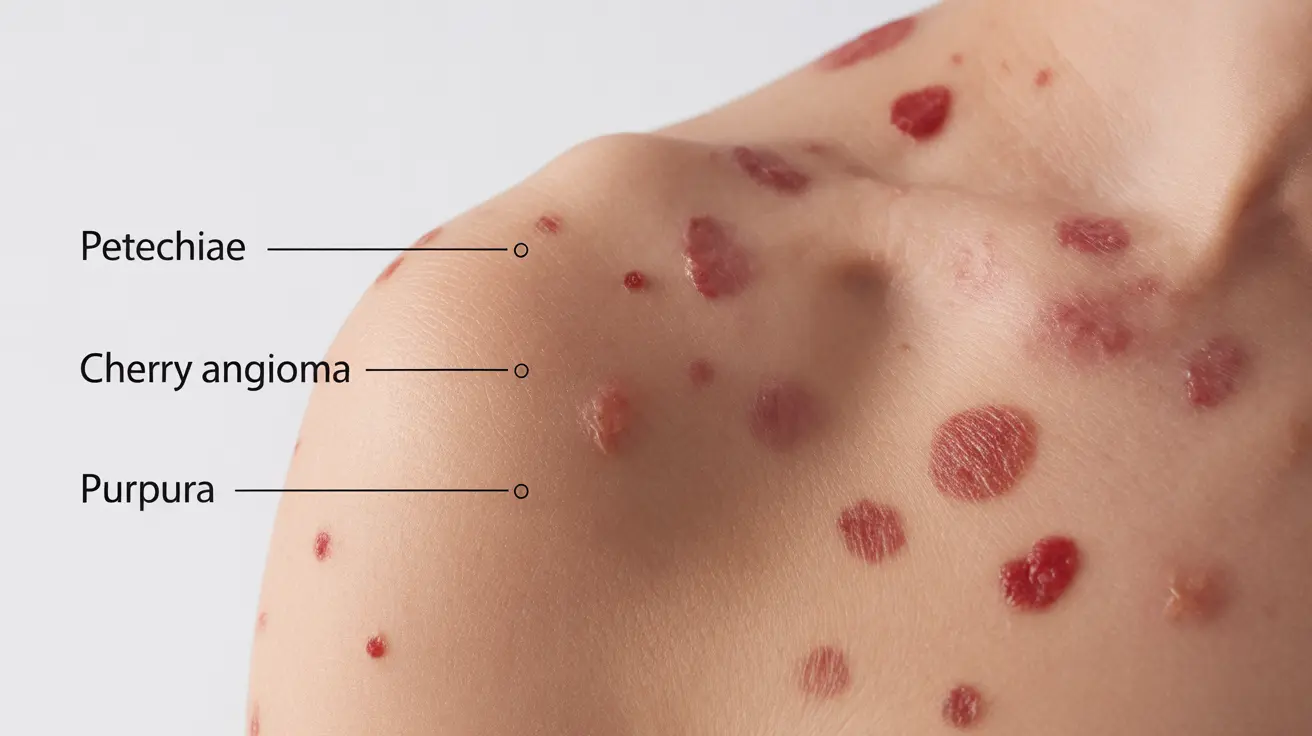Discovering small red dots on your skin can be concerning, especially when they appear suddenly and without other symptoms like itching. These tiny spots, which can range from pinpoint-sized marks to slightly larger dots, may have various underlying causes – from harmless conditions to those requiring medical attention.
Understanding the nature of these spots and knowing when they might signal a more serious condition is crucial for proper care and peace of mind. Let's explore the different types of small red dots that can appear on the skin, their potential causes, and when you should consult a healthcare provider.
Types of Small Red Dots on Skin
Petechiae
Petechiae are tiny, round, red spots that appear when small blood vessels break beneath the skin. These spots:
- Don't blanch (fade) when pressed
- Usually measure 1-2 millimeters in diameter
- Often appear in clusters
- Commonly occur on the legs, arms, and chest
Cherry Angiomas
These common benign growths are:
- Bright red in color
- Slightly raised or smooth
- More common in adults over 30
- Generally harmless unless they change in appearance
Other Common Types
Several other conditions can cause small red dots, including:
- Blood spots (purpura)
- Tiny spider veins (telangiectasias)
- Keratosis pilaris
- Contact reactions
Common Causes of Non-Itchy Red Dots
Physical Causes
Various physical factors can lead to the appearance of small red dots:
- Pressure or friction on the skin
- Sun exposure
- Minor injuries
- Exercise or heavy lifting
Medical Conditions
Several underlying health conditions may cause small red dots to appear:
- Blood platelet disorders
- Vitamin K deficiency
- Certain infections
- Vascular conditions
When to Seek Medical Attention
While many small red dots are harmless, certain warning signs warrant immediate medical evaluation:
- Sudden appearance of widespread spots
- Spots accompanied by fever or illness
- Unexplained bruising
- Bleeding from other sites
- Severe fatigue or weakness
Diagnostic Process
Healthcare providers typically follow these steps to evaluate small red dots:
- Physical examination
- Medical history review
- Blood tests when necessary
- Skin biopsy in certain cases
Frequently Asked Questions
What causes small red dots on the skin that do not itch or hurt?
Small red dots that don't itch or hurt can be caused by various factors, including broken blood vessels (petechiae), cherry angiomas, blood disorders, or minor trauma to the skin. Some cases are benign and age-related, while others may indicate underlying medical conditions.
How can I tell if red dots on my skin are petechiae or just a harmless rash?
Petechiae can be distinguished from regular rashes because they don't blanch (turn white) when pressed. They're typically flat, don't itch, and appear as perfectly round, pinpoint-sized red dots. Regular rashes often have irregular shapes and may be raised or itchy.
When should I see a doctor if I notice sudden small red dots on my skin?
Seek medical attention if the red dots appear suddenly and extensively, are accompanied by fever or illness, occur with unexplained bruising, or if you experience additional symptoms like fatigue or bleeding. Immediate evaluation is particularly important if the spots spread quickly.
Can medications or infections cause small red spots like petechiae on the skin?
Yes, certain medications (especially blood thinners) and infections can cause petechiae and other small red spots. Common infectious causes include viral infections, bacterial endocarditis, and certain tick-borne diseases. Some medications may affect blood clotting or platelet function.
How are petechiae treated and what underlying conditions should be checked?
Treatment focuses on addressing the underlying cause rather than the petechiae themselves. Healthcare providers typically check for blood disorders, infections, vitamin deficiencies, and medication effects. Treatment may include adjusting medications, treating infections, or managing underlying health conditions.




